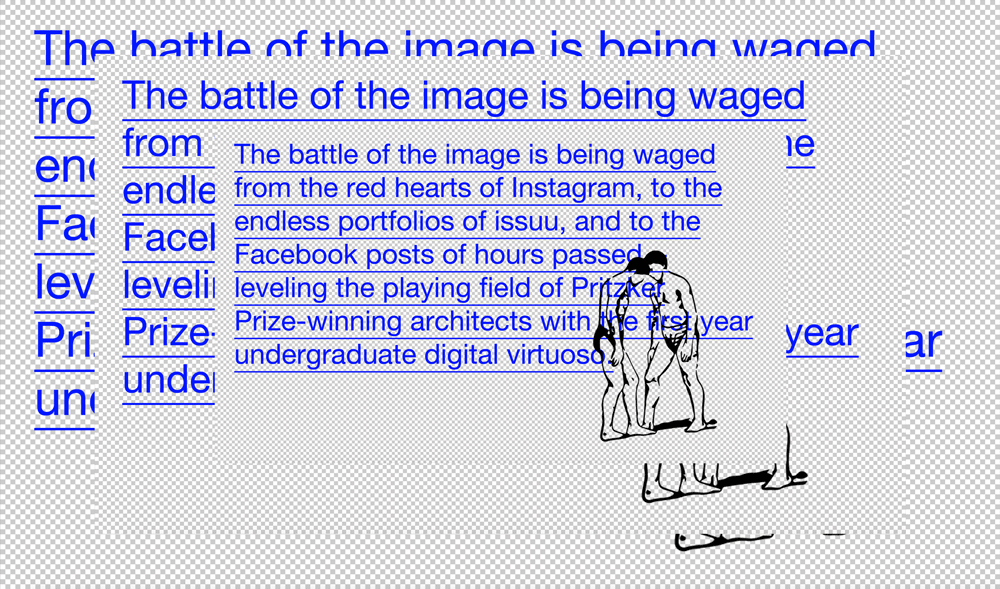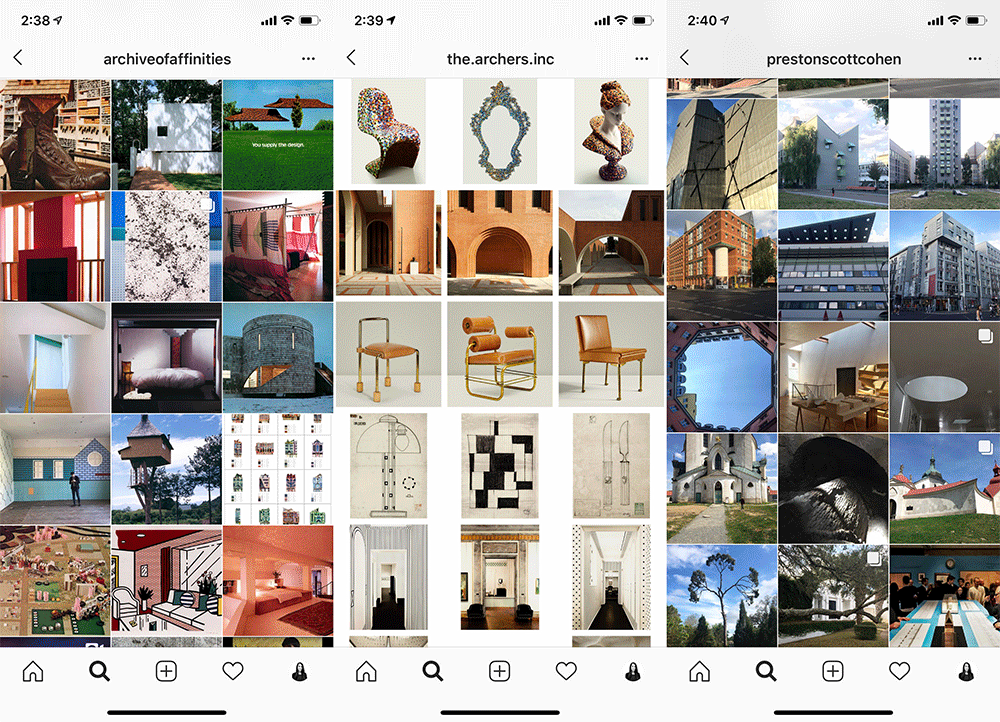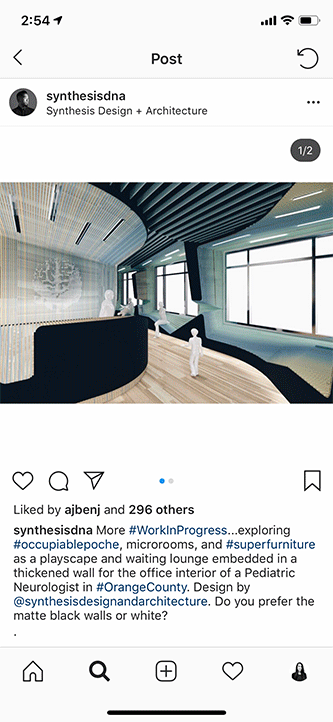

The role of Archinect’s series Cross-Talk is to bring forward the positive aspects of the polemic and allow for the resulting conflict to bring to life an otherwise still and comfortable climate of creativity—if there can be one. Cross-Talk attempts—if to only say that it did—to allow text the freedom that the image has accepted and embraced. Cross-Talk attempts to force the no, to contradict itself, to anger, to please and then anger again, if only to force a stance, to pull out the position of the self, of the discipline and of the hour as a means to begin and maintain conversations moving forward.
In this series, we are looking at the role Practice and Academia in today's disciplinary framework and how we can begin to analyze and recalibrate their relationship. In today's installment we hear from Erin Cuevas, a Los Angeles based designer and lead of Curious Minds Los Angeles.
We are moving towards a synthesis of architectural academia and practice, where value is generated internally, between ourselves and our enthusiasts, through online media presence. If we accept the reality of social media as a platform to prioritize and disseminate images, one version of being an architect could mean practicing solely as an image-maker, producing value via professional imagistic “influencing”.
One of the strongest links between architectural academia and practice is the image. In university, learning to develop a form of communication through imagery - meaning a) a technical proficiency in drawing types and uses, and in some cases b) an authorship and style over our own drawing language - is among the most fundamental skills for translating theory into practice.
Today, while architects continue to produce drawings and images, images are building increasing prominence as a cultural medium of communication. This moment represents an opportunity for the profession, where the inherent production of architectural discourse can fulfill societal demands.
The ubiquity of image consumption through social media is already leveraged as an opportunity for our architects - both students and practitioners. We evolve our own profiles while also following our favorite content creators; the constant accessibility of these public accounts results in an ecosystem where ideation, creation, and critique collapse into one. In Anthony’s Cross Talk introduction, he characterizes the impact of social media as “leveling the playing field of Pritzker Prize-winning architects with the first year undergraduate digital virtuoso”. Participants thereby transcend the dichotomies - existing simultaneously as consumer and producer; student and practitioner; audience and performer.

The following are specific threads of applicable insight that support social media as a means of deconstructing the distinction between academia and practice:
Branding. Instagram accounts branded by: feed aesthetic @commonaccounts; craft @david_umemoto; and archi-memes @sssscavvvv

Social media for architectural history and theory. @archiveofaffinities, @the.archers.inc, @prestonscottcohen

Process as product. @slkkoetter (instructor and practitioner), @archdekk (student), @oylerwu (instructor and practitioner)

Audience becomes both producer and client. @synthesisdna
There is a mismatch between the social value of art and the ability of public consumers to pay for it. Quantities of followers, likes, shares and comments don’t necessarily translate directly into income for the producer. There is potential to unlock revenue through advertisement - this technique is already vastly employed by the many “Mega” and “Micro” influencers across all types of accounts, who make a living off their digital feed. This trend suggests a potential future of architecture in which popular accounts promote products through their images, and receive sponsorship from brands seeking to attract niche audiences. Further avenues for generating income could manifest themselves under this new paradigm, building off opportunities emerging from parsing out the architectural consumer-producer feedback loop. Consumers paying for production of bespoke images; schools sponsoring accounts that instruct through image; collaborations with brands and image-makers of other industries; image-making as consulting; these are all directions in which the market could move.
There is a mismatch between the social value of art and the ability of public consumers to pay for it. Quantities of followers, likes, shares and comments don’t necessarily translate directly into income for the producer.
In the case of social media, we see a capitalist version of the profession where the entire community of architects and architectural enthusiastic contribute alike, and the image is in control. While there will there will always be a need for utilitarian construction - be it for shelter, commerce, or social congregation - the present conditions herald the emergence of a new type of architect, the Architect-Influencer, the neo-starchitect who practices though the novelty of image, and whose status is measured by scale of following. In this form of practice, ideas are contributed to by an entire community, and yet the rewards still accrue to a competent few; the transcendence of this dichotomy is at once exciting and alarming. Where traditional expertise is accrued from years of improving craft, credentials, and a portfolio of physically built work, this new paradigm sets individuals free from the Curriculum Vitae, with the only criterion for success being an objective measurement of audience engagement.
Erin Cuevas is an architect committed to addressing the increasingly media-centric world by challenging the intersection of culture, digital behavior and architecture. Together with Jana Masset she co-founded Curious Minds Los Angeles, an architecture office focusing on sensory and ...
1 Comment
Visual media, a mere metaphor of the true all encompassing sensorial aspect of architecture, has displaced drawings as the dominant form communication amongst the public. So, it temporarily provides the primary means of communication until VR seizes the reins to providing a closer, yet still inadequate, understanding of the physical experience of an unrealized design. I do not think it is coincidence that Newtecnic, a leader in innovative technological techniques, builds physical panels as a means of leverage and understanding for the bidding process to provide a sense of ease for the clients, themselves as well as contractors to insure a predictable construction process. Ironically Andrew Watts suggests that now, as with the Medieval Ages and indigenous architecture, we will build on site using material of the area and alter design during the process - a far removed concept from the top-down statement of the industrial architectural drawing.
"Value" refers to the amount of labor necessary to produce a marketable commodity, including the labor necessary to develop any real capital used in the production. Visual representations are merely abstract representations of architecture, albeit necessary at this junction. Social media does not prioritize image or even, more importantly, recognize the ones of the highest value, instead they are creating a single “global village,” regardless of someone’s ethnicity, sex, or economic background dictated by the masses where variation, mutation, and singular endeavors will become overlooked. Innovation, now more than ever, will NOT come from the kaleidoscope of images we see, rather from the ability (as always) to navigate the social, political and economics aspects of today (NOT the nostalgic past or utopian future) that will more than likely require an adherence to something similar to the Hannover Principles (http://www.mcdonough.com/writings/the-hannover-principles/) to meet the physical realities of the environmental ecosystem that we, not nature, have created. However, the internet is influencing how we think and act, an ephemeral medium that will be superseded by others to create simultaneous world or perception with no continuity, no connections, and no stasis.
The drive-in movies theaters of the early 20th century provided a unique opportunity for aspiring amateur filmmakers to have their low budget B-Movies play alongside the A-movies, and did help some, with talented skill sets, become A-list filmmakers. Roger Corman, an independent B-movie film producer where many filmmakers got their start, provided the “academic” setting where school and practice were learned as one. Similar to the drive-in for aspiring filmmakers, social media provides an opportunity of aspiring amateur architects to be exposed next to starchitect images. It is not so much as a leveling of the playing field as much as chance for new architects to be seen and potentially elevate their status, for those who possess the proper training from academia and practice.
Block this user
Are you sure you want to block this user and hide all related comments throughout the site?
Archinect
This is your first comment on Archinect. Your comment will be visible once approved.